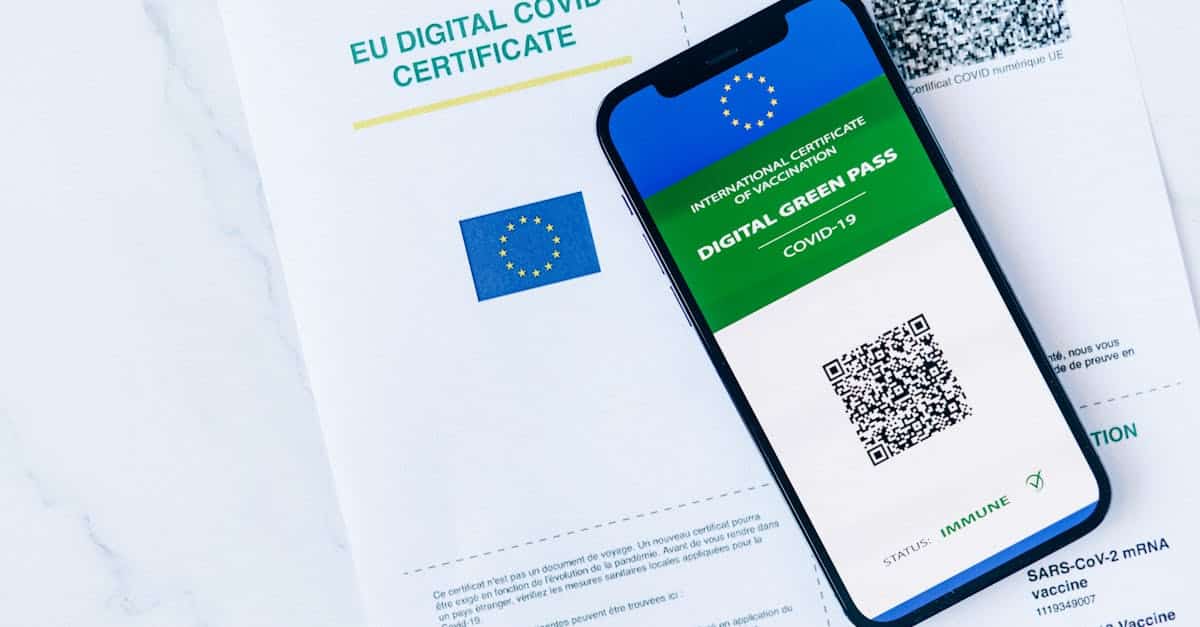
Introduction
Quick take: Remote teams signing contracts from anywhere is standard — but convenience brings compliance risk: cross‑border validity questions, weak audit trails, and accidental PII exposure can turn a simple signature into a legal headache. A disciplined e-signature integration, paired with document automation to standardize templates, redact sensitive fields, and enforce retention, converts ad hoc signing into a defensible, repeatable process.
This playbook guides HR, legal, and compliance owners through the essentials you need to get right — from global frameworks (ESIGN, eIDAS) and capturing legal intent, to building immutable audit trails, minimizing PII in signing payloads, automated redaction, and the policy artifacts auditors will expect. The sections that follow deliver practical steps, integrations, and checklist items to design remote signing workflows that are both user-friendly and auditable.
Key global e‑signature frameworks explained: ESIGN, eIDAS, and other regional rules that affect validity
ESIGN (United States): The ESIGN Act validates electronic signatures when parties agree to use them, and when there’s a record that accurately reflects the transaction and is retainable. It’s often paired with state laws like UETA; together they focus on intent, consent, and reliable records.
eIDAS (European Union): eIDAS defines three levels — simple, advanced, and qualified electronic signatures. A qualified electronic signature (QES) has the highest presumptive legal effect in the EU; achieving it generally requires a qualified trust service provider and stronger identity verification.
Other regional frameworks: Many jurisdictions use variants of these principles—India’s IT Act and subsequent rules, Canada’s PIPEDA-influenced provincial laws, and UK law post-Brexit. Requirements differ on identity proofing, retention, and the evidentiary value of audit trails.
Practical implication for e-signature integration: When designing an e-signature integration, map the business use case (low-risk acknowledgements vs. high-risk contracts) to the legal standard required in each jurisdiction. That decision drives whether you need qualified signatures, enhanced KYC, or simply a robust electronic signature software setup.
Capturing legal intent and consent: best practices for timestamping, IP logging and signer declarations
Capture clear declarations. Present explicit signer statements (e.g., “I agree to be bound by this agreement”) and require an affirmative action such as a checked box or typed name. This is a primary piece of evidence of consent.
Timestamping. Use cryptographic timestamps to record when a signature was applied. Timestamps should be tied to the document hash and recorded in UTC to avoid ambiguity across time zones.
IP and device fingerprints. Log IP addresses, user-agent strings, and optional device fingerprints. These details supplement intent and can help confirm location or unusual activity when disputes arise.
Authentication and multi-factor options. Combine email-based access with stronger controls where needed: OTP via SMS, knowledge-based verification, or OAuth/SSO. Use your electronic signature API or signing API to enforce these checks as part of the esign workflow integration.
- Best practice: Store signer declarations, timestamped events, and authentication metadata together in the audit trail.
- Best practice: Keep UI prompts minimal but explicit to reduce user error and demonstrate informed consent.
Building auditable trails: what must be recorded (events, IP addresses, document hashes) and where to store them
Minimum audit data to record:
- Document version and cryptographic hash (SHA-256 or better).
- Timestamps for each event (document viewed, signed, sent, revoked).
- Signer identity metadata (email, authenticated user ID) and IP address.
- Authentication method used (email link, OTP, SSO) and any verification evidence.
- System events such as template changes, access grants, and API calls to the signing service.
Where to store audit data. Use write-once or append-only storage for audit trails. Options include immutable cloud logs, WORM-capable storage, or dedicated append-only databases. Keep the audit trail separately from editable document storage to reduce tamper risk.
Retention, access, and encryption. Encrypt audit logs at rest, control access via IAM policies, and define retention windows based on legal needs. For high-value records, consider journaling hashes into a secondary public ledger or using notarization services to strengthen non-repudiation.
Integrations. Your signing API or e-signature integration tools should provide webhook events and signed evidence packages (PDF with audit summary, JSON audit file). Ensure those artifacts are captured and archived automatically.
Cross‑border data handling: DPAs, transfer mechanisms, and minimizing PII in signing payloads
Data Processing Agreements (DPAs). Always have DPAs with your e-signature providers and subprocessors. DPAs should specify processing purposes, security measures, subprocessors, and breach notification timelines. Use a template DPA and customize for vendor specifics — see a sample DPA here: DPA template.
International transfer mechanisms. Rely on adequacy decisions, Standard Contractual Clauses (SCCs), or Binding Corporate Rules (BCRs) when data crosses jurisdictions. Document which mechanism applies for each country where your signing traffic is processed.
Minimize PII in signing payloads. Send only necessary identifiers to the e-signature platform. Avoid embedding full SSNs, full payment card numbers, or other sensitive fields in documents or metadata. Use pseudonyms, partial masking, or tokenization before handing data to the signing service.
Operational notes. Configure hosting regions for your e-signature provider where possible. Log subprocessors and their locations in your vendor register, and include transfer risk assessments in vendor onboarding.
Related integrations: When building integrations (e-signature integration salesforce, e-signature integration with google docs, or e-signature integration zapier), ensure the connector only passes sanctioned fields and that you keep a minimized payload strategy.
Automated redaction and PII protection: redact before storage, use tokenization and limit retention windows
Redact before you store. Implement automated redaction at the ingestion point: parse documents for known PII patterns (SSNs, account numbers, dates of birth) and redact or mask them prior to persistent storage.
Tokenization and pointers. Replace sensitive values with tokens and store the mapping in a tightly controlled vault. Passing tokens to e-signature software instead of raw PII reduces exposure and simplifies GDPR/CIPA/PIPEDA compliance.
Automated workflows. Use OCR + pattern recognition for incoming PDFs, then route documents through an automated redaction step before archiving. Integrate this into your esign workflow integration so only scrubbed versions are retained long-term.
Retention windows and secure deletion. Define short retention windows for raw signing payloads and enforce secure deletion (cryptographic erasure or overwriting) once the window expires. Keep the signed artifact and minimal audit trail for the legally required period.
- Use DLP and monitoring to detect accidental leaks in storage and logs.
- Test redaction regularly — false negatives are a common weak point.
Policy and process controls: signer access controls, role‑based approvals, and periodic compliance reviews
Signer access controls. Enforce strong authentication for signers and administrators. Offer SSO for internal users, and require MFA for privileged roles. Restrict who can send documents for signature and who can modify templates.
Role‑based approvals and separation of duties. Implement role-based workflows where document creation, approval, and final signature are separate roles. Use approval gates to prevent single-person control over high-risk contracts.
Change control and auditability. Track changes to templates and workflows. Use versioning and require approvals for template changes that affect legal terms or data capture fields.
Periodic reviews. Schedule regular compliance reviews: vendor risk, access rights, audit trail integrity, and retention policy adherence. Use checklists tied to laws like ESIGN/eIDAS and to internal SOPs.
Training and incident response. Train staff on secure signing processes and maintain an incident response plan that includes steps for suspected signature fraud or data leakage.
Templates and compliance artifacts to keep on hand for audits: DPAs, privacy policies, employee agreements and signature logs
Core documents to retain:
- Data Processing Agreements and subprocessor details — example DPA: DPA template.
- Privacy policy and cookie notices documenting processing purposes — see a starter privacy policy: Privacy policy template.
- Employment agreements and role-based access clauses for internal signers — sample: Employment agreement.
- Signature logs and completed audit trail packages (PDF + JSON audit file).
- Contract lifecycle automation (CLM) templates, retention schedules, and change logs.
- Evidence of vendor security assessments, SOC reports, and penetration test results.
How to organize artifacts. Keep an indexed compliance folder (or a compliance module in your CLM) containing DPAs, privacy policies, template change logs, and a mapping of which signature standard (ESIGN/eIDAS) applies to each template. Store signed artifacts and audit trails in immutable archives tied to your retention policy.
Audit readiness. Maintain a checklist that maps evidence to requirements (who, what, when, how). When auditors ask for records, provide the signed document, the JSON audit file from the signing API, the DPA with the provider, and any identity-verification evidence used during signing.
Tooling and integrations. Use e-signature integration tools and an electronic signature API that can export standardized evidence packages. That simplifies audits and supports operational tasks like esign workflow integration and secure document workflows.
Summary
Conclusion: Remote signing is now business‑as‑usual, but it only becomes defensible when legal standards, technical controls, and operational processes work together. Map the right legal framework (ESIGN, eIDAS, or regional rules) to your use case, capture clear consent and authentication, record immutable audit trails, and minimize PII via redaction or tokenization. Document automation helps HR and legal teams standardize templates, enforce retention and approvals, reduce manual errors, and speed onboarding while preserving auditability. Choosing the right e-signature integration and pairing it with automated redaction and retention policies turns ad hoc signing into a repeatable, auditable process — learn more at https://formtify.app
FAQs
What is e-signature integration?
e-signature integration is the process of connecting an electronic signature provider to your applications or workflows so documents can be signed digitally without manual steps. It typically uses signing APIs, webhooks, and connectors to automate sending, tracking, and archiving signed artifacts while preserving audit data.
How do I integrate e-signature into my application?
Start by defining the use case and required legal standard, then choose a provider with the necessary APIs and verification options. Implement the signing API, hook up webhooks for audit events, test identity and timestamping flows, and ensure the integration limits PII and captures the full audit trail.
Are e-signatures legally binding?
Yes—e-signatures are generally legally binding when they demonstrate signer intent, consent, and a durable record, as reflected in laws like the U.S. ESIGN Act and EU eIDAS. Requirements vary by jurisdiction and risk level (for example, a qualified electronic signature in the EU gives stronger presumptive legal effect), so match the technical controls to the legal standard.
Can I integrate e-signature with Salesforce?
Yes—many e-signature providers offer Salesforce connectors or managed packages that let you prepare, send, and track agreements from within Salesforce. Ensure the connector only passes approved fields, logs audit evidence to your records, and fits your approval and access‑control policies.
How much does e-signature integration cost?
Costs vary based on provider pricing (per user, per signature, or tiered plans), features like advanced identity verification or qualified signatures, and development effort for the integration. Budget for provider fees, implementation time, and ongoing maintenance, and compare total cost of ownership against the process efficiencies and compliance benefits you gain.





